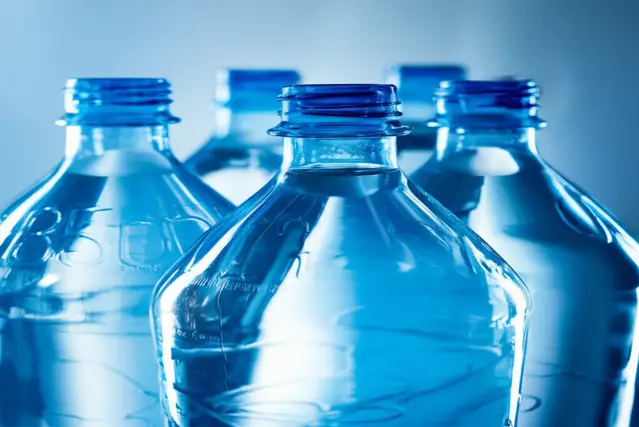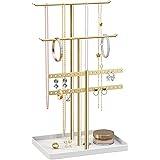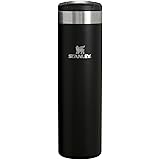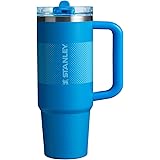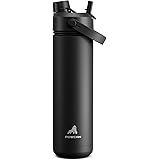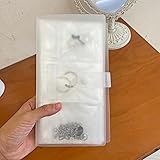Planning a trip and wondering whether you can bring your own water bottle on board? Staying hydrated during air travel is crucial, but navigating airport security can be tricky. The rules about liquids, especially water, often leave travelers confused. This comprehensive guide will provide you with all the up-to-date information for 2025 regarding bringing unopened water bottles on a plane.
We’ll cover TSA regulations, potential exceptions, practical tips, and answer frequently asked questions to ensure your journey is smooth and well-hydrated. Let’s dive in!
Understanding the TSA’s Liquid Rules
The Transportation Security Administration (TSA) has strict rules regarding liquids, aerosols, and gels (LAGs) in carry-on baggage. These regulations are in place to ensure passenger safety and prevent potential security threats. Knowing these rules is the first step in understanding whether you can bring that unopened water bottle through security.
The 3-1-1 Rule: A Quick Overview
The cornerstone of the TSA’s liquid policy is the 3-1-1 rule. This rule dictates:
- 3.4-ounce (100 ml) container limit: All liquids must be in containers that are 3.4 ounces (100 milliliters) or less.
- 1 quart-sized bag: These containers must fit comfortably in one quart-sized, clear plastic zip-top bag.
- 1 bag per passenger: Each passenger is limited to one such bag.
While this rule primarily applies to liquids you plan to bring through security in your carry-on, it has implications for unopened water bottles as well. Any water bottle containing more than 3.4 ounces of liquid will be subject to the rules below.
What Happens to Liquids at Security Checkpoints?
Before going through security, you’ll need to remove your quart-sized bag of liquids from your carry-on and place it in a separate bin. TSA officers may also ask you to remove laptops, tablets, and other large electronic devices. This process helps them get a clear X-ray image of your belongings and speeds up the screening process.
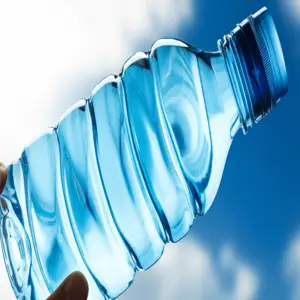
TSA water rules
Any liquids that don’t comply with the 3-1-1 rule will be confiscated. This includes full-sized water bottles, even if they’re unopened.

However, there are some exceptions, which we’ll explore later.
Can You Bring Unopened Water Through Security? The Short Answer
No, you generally cannot bring an unopened water bottle containing more than 3.4 ounces (100 ml) through airport security. TSA regulations mandate that all liquids in carry-on baggage must adhere to the 3-1-1 rule. An unopened water bottle, typically containing 16 ounces or more, exceeds this limit and will be confiscated.
Think of it this way: even though it is unopened and clearly just water, the TSA’s priority is to scan and verify all liquids. An unopened bottle inhibits this process which triggers the 3-1-1 rule to take effect.
However, the important word here is “through” security. Once you are past the security checkpoint, the rules change. This is where the opportunity to bring water on the plane arises.
Options for Getting Water on the Plane
While bringing an unopened bottle through security isn’t an option, there are still several ways to ensure you stay hydrated during your flight:
1. Purchase Water After Security
The most straightforward solution is to buy a bottle of water from a store or vending machine in the airport terminal after you’ve cleared security. Airports are usually well-equipped with vendors selling beverages, snacks, and other travel essentials. The prices, however, can be significantly higher than what you’d pay outside the airport. A bottle of water that might cost $1 at a grocery store could easily be $3 or $4 at an airport kiosk. Factor this into your travel budget if you plan to rely on this option.
This is the most common and easiest method for air travelers to bring water aboard the plane. Once you pass security you are free from the 3-1-1 rule.
2. Bring an Empty Water Bottle and Fill It Up
A smart and economical approach is to bring an empty water bottle through security and fill it up at a water fountain or bottle filling station once you’re past the checkpoint. Many modern airports now have dedicated bottle filling stations, making this option even more convenient. This is a great way to save money and reduce plastic waste.
Consider investing in a reusable water bottle made of stainless steel or BPA-free plastic. These are durable, easy to clean, and can be refilled repeatedly. Choose one with a wide mouth for easy filling and cleaning.
3. Freeze Your Water Bottle
This is a clever workaround. If you freeze your water bottle solid before heading to the airport, it’s technically considered a solid, not a liquid, by the TSA. As long as it remains frozen when you go through security, it should be allowed. However, be aware that if it starts to melt and contains any liquid, it might be subject to the 3-1-1 rule.
Keep in mind that TSA officers have the final say, and their interpretation of the rules can vary. It’s always a good idea to check with the TSA or your airline beforehand to confirm their current policy on frozen liquids.
4. Utilize Airport Water Bottle Filling Stations
Many airports are now equipped with water bottle filling stations. These stations are designed to provide travelers with a convenient and sanitary way to refill their water bottles after passing through security. These stations often feature filtered water and hands-free operation, making them a hygienic and eco-friendly option.
A quick online search for your airport’s amenities can confirm the availability of water bottle filling stations. Look for signs within the terminal as well.
Exceptions to the Rule: Special Circumstances
While the 3-1-1 rule generally applies to all liquids in carry-on baggage, there are a few exceptions for specific circumstances. These exceptions are often related to medical needs or infant care.
Medically Necessary Liquids
The TSA makes allowances for medically necessary liquids, including medications, baby formula, and breast milk. These items are exempt from the 3-1-1 rule, but you must declare them to the TSA officer at the security checkpoint. It’s also advisable to have a doctor’s note or prescription for any medications you’re carrying.
You may be asked to undergo additional screening procedures for these items, such as opening the containers for inspection. However, TSA officers are trained to handle these situations with sensitivity and respect.
Baby Formula and Breast Milk
If you’re traveling with an infant, you’re allowed to bring a reasonable amount of baby formula or breast milk, even if it exceeds the 3.4-ounce limit. Again, you must declare these items to the TSA officer. It’s also a good idea to have a copy of your baby’s birth certificate or adoption papers to verify your relationship.
TSA officers may test these liquids for explosives or other prohibited items. This testing is typically done using specialized equipment that doesn’t require opening the containers.
Other Medical Liquids
Other medical liquids, such as liquid nutrition or eye drops, are also exempt from the 3-1-1 rule. As with medications, it’s a good idea to have a doctor’s note or prescription to avoid any delays or complications at security.
It is important to declare all medical liquids to the TSA officer for proper inspection. Do not try to conceal these items within your luggage.
Staying Hydrated on Your Flight
Regardless of how you choose to get your water, staying hydrated during your flight is crucial. Air travel can be dehydrating due to the low humidity levels in the cabin. Here are some tips to help you stay properly hydrated:
- Drink plenty of water before your flight: Start hydrating well in advance of your trip.
- Avoid excessive alcohol and caffeine: These can contribute to dehydration.
- Bring hydrating snacks: Fruits and vegetables with high water content, such as watermelon and cucumbers, can help keep you hydrated.
- Use moisturizer: Combat dry skin by applying moisturizer regularly.
Staying hydrated helps combat fatigue, headaches, and other discomforts associated with air travel. It can also help you adjust to different time zones more easily.
TSA PreCheck and Global Entry
Enrolling in programs like TSA PreCheck or Global Entry can significantly streamline your airport security experience. These programs allow you to go through expedited security lanes, which often have less stringent rules regarding liquids.
TSA PreCheck
TSA PreCheck allows eligible travelers to go through security without removing their shoes, belts, or light jackets. They can also leave their laptops and 3-1-1 compliant liquids in their carry-on bags. While TSA PreCheck doesn’t eliminate the 3-1-1 rule entirely, it can make the process more convenient.
To enroll in TSA PreCheck, you’ll need to apply online and undergo a background check. If approved, you’ll receive a Known Traveler Number (KTN) that you can use when booking your flights.
Global Entry
Global Entry is a U.S. Customs and Border Protection (CBP) program that allows expedited clearance for pre-approved, low-risk travelers upon arrival in the United States. Global Entry members are also eligible for TSA PreCheck benefits.
Applying for Global Entry involves a similar process to TSA PreCheck, including an online application and a background check. You’ll also need to attend an in-person interview at a Global Entry enrollment center.
Tips for Packing Liquids in Your Carry-On
If you’re planning to bring other liquids in your carry-on bag, such as toiletries or cosmetics, follow these tips to ensure a smooth security experience:
- Use travel-sized containers: Transfer your favorite products into travel-sized containers that meet the 3.4-ounce limit.
- Use clear, zip-top bags: Pack all your liquid containers in a quart-sized, clear plastic zip-top bag.
- Place the bag at the top of your carry-on: This will make it easy to remove the bag for screening.
- Consider solid alternatives: Opt for solid alternatives to liquids whenever possible, such as shampoo bars or solid sunscreen.
Proper packing can save you time and hassle at the security checkpoint. It can also help prevent leaks and spills in your carry-on bag.
Airline Policies on Liquids
While the TSA sets the security regulations, airlines may have their own policies regarding liquids on board. These policies typically align with the TSA’s rules, but it’s always a good idea to check with your airline before your flight.
Some airlines may offer complimentary water or other beverages during the flight. Others may charge for these items. Knowing your airline’s policy can help you plan accordingly and avoid unnecessary expenses.
Staying Updated on TSA Regulations
TSA regulations are subject to change, so it’s important to stay informed about the latest updates. The TSA website (www.tsa.gov) is the best source for official information. You can also follow the TSA on social media for news and travel tips.
Consider checking the TSA website or app a few days before your flight to ensure you’re up-to-date on any changes to the liquid rules or other security procedures.
Environmental Considerations
Choosing sustainable options for hydration can help reduce your environmental impact. Consider these eco-friendly alternatives to single-use plastic water bottles:
- Reusable water bottles: As mentioned earlier, reusable water bottles are a great way to reduce plastic waste.
- Water filters: Some reusable water bottles come with built-in filters, allowing you to fill up from any water source.
- Water purification tablets: These tablets can purify water from questionable sources, making it safe to drink.
By making conscious choices about hydration, you can minimize your environmental footprint and contribute to a more sustainable travel experience.
Real-World Examples
Let’s consider a few real-world examples to illustrate how these rules and tips apply in practice:
Example 1: Sarah is traveling with her baby. She’s bringing breast milk for her infant. She knows she can bring the breast milk, but declares it to the TSA agent. The agent may test the breast milk in a non-invasive way and allow Sarah to proceed. She has a doctor’s note, but it is not required in this example.
Example 2: John forgot he had a full bottle of water in his backpack. As he goes through security, the TSA agent notices it in the x-ray. John is asked to remove the water bottle and discard it before continuing through security.
Example 3: Maria brings an empty water bottle. After passing through security, she finds a water bottle filling station and fills up her bottle. She stays hydrated throughout her flight and reduces her plastic waste.
Common Mistakes to Avoid
Travelers often make common mistakes when it comes to bringing liquids on a plane. Here are some pitfalls to avoid:
- Forgetting about the 3-1-1 rule: This is the most common mistake. Always remember the 3.4-ounce limit and the quart-sized bag requirement.
- Not declaring medically necessary liquids: Failure to declare these items can lead to delays or confiscation.
- Assuming that frozen liquids will always be allowed: While frozen liquids are often permitted, TSA officers have the final say. Be prepared to discard the item if it starts to melt.
- Overpacking your quart-sized bag: Make sure all your liquid containers fit comfortably in the bag. Overstuffing the bag can raise suspicion and lead to additional scrutiny.
Advanced Hydration Strategies for Long Flights
For long-haul flights, staying hydrated requires a bit more planning and effort. Here are some advanced strategies to consider:
- Electrolyte supplements: Electrolyte supplements can help you replenish lost minerals and stay hydrated more effectively.
- Hydration tablets: These tablets dissolve in water and provide electrolytes and other nutrients.
- Schedule regular water breaks: Set reminders on your phone or watch to drink water at regular intervals.
- Choose hydrating foods: Pack hydrating snacks like fruits, vegetables, and yogurt.
By implementing these strategies, you can minimize the effects of dehydration and arrive at your destination feeling refreshed and energized.
The Future of Airport Security and Liquid Restrictions
Airport security technology is constantly evolving, and there’s hope that future advancements will lead to less restrictive rules regarding liquids. Some airports are already experimenting with new screening technologies that can detect explosives and other threats without requiring passengers to remove liquids from their bags.
These technologies could potentially eliminate the need for the 3-1-1 rule altogether, making air travel more convenient for everyone. However, until these advancements are widely adopted, it’s important to stay informed about the current regulations and follow them carefully.
One possibility is the use of advanced CT (Computed Tomography) scanners, which create a 3D image of the contents of your bag. These scanners are already being deployed in some airports and can identify potential threats without the need to remove liquids or laptops. As the technology becomes more widespread, we may see a gradual easing of liquid restrictions.
Alternative Beverages Allowed on Planes
While this article has focused primarily on water, it’s worth noting that other beverages may also be allowed on planes under certain conditions. Here’s a quick rundown:
- Coffee and Tea: You can purchase coffee or tea after security and bring it on the plane. Some airlines also offer complimentary coffee and tea during the flight.
- Juice: Similar to water, you can buy juice after security or bring small, travel-sized containers that comply with the 3-1-1 rule through security.
- Soda: Soda is also available for purchase after security. You can bring small, compliant containers through security as well.
- Alcohol: While you can purchase alcohol after security and consume it on the plane, most airlines prohibit passengers from drinking their own alcohol that they bring on board. Check with your airline for their specific policy.
Navigating International Flights and Liquid Restrictions
If you’re traveling internationally, it’s important to be aware that liquid restrictions may vary from country to country. While many countries follow the 3-1-1 rule similar to the TSA, some may have stricter regulations or different interpretations. It’s always a good idea to check the specific rules for your destination and any connecting airports.
Some countries may also have restrictions on bringing certain types of food or beverages into the country. Be sure to research these regulations before you pack your bags to avoid any problems at customs.
The Role of Technology in Enhancing Hydration on Flights
Technology is playing an increasingly important role in helping passengers stay hydrated on flights. From smart water bottles that track your water intake to apps that remind you to drink regularly, there are many tools available to help you stay hydrated and healthy during air travel.
Some airlines are also incorporating technology into their in-flight entertainment systems to provide passengers with personalized hydration recommendations. These systems can track factors like cabin humidity, flight duration, and individual passenger characteristics to suggest optimal hydration strategies.
Examples:
- Smart Water Bottles
- Hydration Reminder Apps
- Airline In-Flight Systems
DIY Electrolyte Drinks for Travel
Instead of relying on store-bought electrolyte drinks, consider making your own DIY versions for travel. These homemade drinks can be just as effective at replenishing electrolytes and keeping you hydrated.
Here’s a simple recipe for a DIY electrolyte drink:
- 1 liter of water
- 1/4 teaspoon of salt (sodium chloride)
- 1/4 teaspoon of potassium chloride (available at health food stores or online)
- 1 tablespoon of honey or maple syrup (for taste and energy)
- Squeeze of lemon or lime (for flavor and vitamin C)
Mix all the ingredients together and store in a reusable water bottle. Sip on this drink throughout your flight to stay hydrated and replenish electrolytes.
Read More: Can You Check Into Hotels at Anytime? The TRUTH (2025)
Packing Considerations for Your Quart-Sized Bag
Maximizing space in your quart-sized bag is essential for bringing all your essential liquids in your carry-on. Here are some tips for efficient packing:
- Use travel-sized containers: As mentioned earlier, travel-sized containers are a must for maximizing space.
- Roll your clothes: Rolling your clothes instead of folding them can save space in your carry-on bag, leaving more room for your quart-sized bag.
- Use packing cubes: Packing cubes can help you organize your carry-on bag and compress your clothes, creating more space for liquids.
- Prioritize essentials: Only bring the liquids you absolutely need in your carry-on bag. Pack the rest in your checked luggage.
By following these tips, you can pack your quart-sized bag efficiently and bring all your essential liquids without exceeding the TSA’s limits.

airplane hydration
Understanding Liquid Restrictions for Duty-Free Purchases
If you’re planning to purchase liquids from duty-free shops at the airport, it’s important to understand the rules regarding these purchases. Duty-free liquids are typically exempt from the 3-1-1 rule, but there are some important conditions to be aware of.
Duty-free liquids must be purchased from an authorized duty-free shop at the airport and must be sealed in a tamper-evident bag (STEB) with the receipt visible inside. The STEB must remain sealed until you reach your final destination. If you open the bag before then, the liquids may be confiscated at security checkpoints during connecting flights.
It’s also important to note that some countries may have restrictions on the amount of duty-free liquids you can bring into the country. Be sure to research these regulations before you make your purchases.
Special Considerations for Travelers with Disabilities
The TSA makes accommodations for travelers with disabilities who may require additional liquids for medical reasons. If you have a disability that requires you to bring liquids that exceed the 3.4-ounce limit, you should declare these items to the TSA officer at the security checkpoint.
It’s also a good idea to have a doctor’s note or prescription for any medically necessary liquids you’re carrying. This can help avoid any delays or complications at security.
TSA Cares is a helpline that provides assistance to travelers with disabilities. You can contact TSA Cares before your flight to request assistance with security screening.
Practical Tips for Staying Healthy on Long Flights
Beyond hydration, there are several other practical tips you can follow to stay healthy on long flights:
- Get up and move around: Sitting for long periods can increase your risk of blood clots. Get up and walk around the cabin every few hours to improve circulation.
- Do some in-seat exercises: Perform simple exercises like ankle rotations and calf raises to keep your blood flowing.
- Wear compression socks: Compression socks can help prevent swelling and blood clots in your legs.
- Practice good hygiene: Wash your hands frequently and use hand sanitizer to prevent the spread of germs.
- Get enough sleep: Try to get some sleep on the flight to combat jet lag. Bring a travel pillow, eye mask, and earplugs to create a comfortable sleeping environment.
The Impact of Cabin Pressure on Hydration
Cabin pressure during flights can contribute to dehydration. The lower air pressure in the cabin causes your body to lose moisture more quickly, leading to dehydration. This is why it’s especially important to stay hydrated during air travel.
The low humidity levels in the cabin also exacerbate dehydration. The air in the cabin is typically very dry, which can dry out your skin, nasal passages, and throat. This can lead to discomfort and increase your risk of getting sick.
Using Technology to Monitor Your Health During Flights
Technology can be used to monitor your health during flights and help you make informed decisions about hydration and other health-related factors. Wearable devices like fitness trackers and smartwatches can track your heart rate, activity level, and sleep patterns, providing valuable insights into your health during air travel.
Some airlines are also experimenting with biometric sensors in their seats to monitor passengers’ vital signs. This data can be used to provide personalized recommendations for hydration, exercise, and rest.
How Weather Affects Hydration Needs During Travel
The weather conditions at your origin and destination can also affect your hydration needs during travel. If you’re traveling from a hot and humid climate to a cold and dry climate, you may need to adjust your hydration strategy accordingly.
In hot weather, you’ll lose more fluids through sweat, so it’s important to drink plenty of water before, during, and after your flight. In cold weather, you may not feel as thirsty, but you still need to stay hydrated to combat the dry air in the cabin.
Strategies for Combating Jet Lag Through Hydration and Nutrition
Jet lag can be a common and unpleasant side effect of long-distance travel. However, there are strategies you can use to minimize its effects, including proper hydration and nutrition.
- Adjust your sleep schedule gradually: Start adjusting your sleep schedule a few days before your flight to help your body adapt to the new time zone.
- Stay hydrated: Dehydration can worsen jet lag symptoms. Drink plenty of water before, during, and after your flight.
- Eat light meals: Avoid heavy, greasy foods that can disrupt your sleep. Opt for light, healthy meals that are easy to digest.
- Avoid alcohol and caffeine: Alcohol and caffeine can interfere with your sleep and worsen jet lag symptoms.
- Get some sunlight: Exposure to sunlight can help regulate your body’s natural sleep-wake cycle. Try to get some sunlight as soon as you arrive at your destination.
The Psychological Benefits of Staying Hydrated During Travel
Staying hydrated during travel can have psychological benefits as well. Dehydration can lead to fatigue, headaches, and irritability, which can make travel more stressful and unpleasant. By staying hydrated, you can improve your mood, focus, and overall sense of well-being.
Proper hydration can also help you cope with the stress of travel. When you’re well-hydrated, your body is better able to regulate stress hormones and maintain a sense of calm.
Creating a Pre-Flight Hydration Plan
Developing a pre-flight hydration plan can help you ensure that you’re adequately hydrated before you even step on the plane. Here’s a simple plan you can follow:
- Start hydrating the day before your flight: Drink plenty of water and avoid dehydrating beverages like alcohol and caffeine.
- Pack a reusable water bottle: Bring an empty reusable water bottle to the airport and fill it up after you pass through security.
- Eat hydrating foods: Choose fruits and vegetables with high water content, such as watermelon, cucumbers, and oranges.
- Avoid salty foods: Salty foods can lead to dehydration. Avoid processed snacks and fast food before your flight.
- Monitor your urine color: Your urine color is a good indicator of your hydration level. Aim for a pale yellow color, which indicates that you’re well-hydrated.
Post-Flight Hydration Recovery
After a long flight, it’s important to rehydrate and replenish your body’s fluids. Here are some tips for post-flight hydration recovery:
- Drink plenty of water: Continue drinking water throughout the day to rehydrate your body.
- Replenish electrolytes: Drink an electrolyte-rich beverage like sports drink or coconut water to replace lost minerals.
- Eat hydrating foods: Choose fruits and vegetables with high water content to help you rehydrate.
- Avoid alcohol and caffeine: Alcohol and caffeine can further dehydrate your body. Avoid these beverages until you’re fully rehydrated.
- Get some rest: Rest and sleep can help your body recover from the stress of travel and rehydrate more effectively.
The Connection Between Gut Health and Hydration During Travel
Gut health plays a crucial role in hydration during travel. A healthy gut can help your body absorb and retain fluids more effectively, while a compromised gut can lead to dehydration and other digestive issues.
To support your gut health during travel, consider the following:
- Take probiotics: Probiotics can help maintain a healthy balance of bacteria in your gut, improving digestion and hydration.
- Eat fiber-rich foods: Fiber-rich foods can promote healthy bowel movements and prevent constipation, which can contribute to dehydration.
- Avoid processed foods: Processed foods can disrupt your gut microbiome and lead to digestive issues.
- Stay hydrated: Proper hydration is essential for maintaining a healthy gut.
Hydration and Skin Health During Air Travel
Hydration is essential for maintaining healthy skin during air travel. The dry air in the cabin can strip your skin of moisture, leading to dryness, irritation, and breakouts.
To protect your skin during air travel, follow these tips:
- Drink plenty of water: Hydrate from the inside out by drinking plenty of water.
- Use a moisturizer: Apply a rich moisturizer to your face and body to help retain moisture.
- Avoid harsh cleansers: Use a gentle cleanser that won’t strip your skin of its natural oils.
- Wear sunscreen: Even if you’re not sitting by a window, UV rays can penetrate the cabin and damage your skin. Wear sunscreen to protect your skin from sun damage.
- Use a hydrating face mask: Apply a hydrating face mask during the flight to give your skin an extra boost of moisture.
Addressing Common Myths About Hydration and Air Travel
There are many myths surrounding hydration and air travel. Let’s debunk some of the most common ones:
- Myth: You only need to drink water when you’re thirsty. Fact: By the time you feel thirsty, you’re already mildly dehydrated. Drink water regularly throughout the day, even if you don’t feel thirsty.
- Myth: Coffee and tea don’t count towards your daily fluid intake. Fact: While coffee and tea have a diuretic effect, they still contribute to your overall fluid intake. Just be sure to balance them with plenty of water.
- Myth: You can’t overhydrate. Fact: While it’s rare, it is possible to overhydrate. Drinking excessive amounts of water can lead to electrolyte imbalances.
- Myth: All bottled water is created equal. Fact: The quality and mineral content of bottled water can vary greatly. Choose a reputable brand that sources its water from a clean and reliable source.
The Role of Nutrition in Optimizing Hydration for Travel
Nutrition plays a key role in optimizing hydration for travel. Certain foods can help you stay hydrated more effectively, while others can contribute to dehydration.
To optimize your hydration through nutrition, consider the following:
- Choose hydrating foods: Focus on fruits and vegetables with high water content, such as watermelon, cucumbers, oranges, and strawberries.
- Eat foods rich in electrolytes: Electrolytes help your body retain fluids and regulate fluid balance. Choose foods like bananas, avocados, spinach, and coconut water.
- Limit salty foods: Salty foods can lead to dehydration. Avoid processed snacks, fast food, and salty condiments.
- Avoid sugary drinks: Sugary drinks can have a diuretic effect and contribute to dehydration. Choose water, unsweetened tea, or fruit-infused water instead.
Utilizing Airport Lounges for Enhanced Hydration Options
If you have access to airport lounges, you can take advantage of their enhanced hydration options. Many airport lounges offer complimentary water, juice, coffee, tea, and other beverages, as well as healthy snacks and meals.
Some airport lounges also have dedicated hydration stations with infused water, electrolyte drinks, and other specialized beverages.
Having access to an airport lounge can make it easier to stay hydrated and nourished during your travel experience.
The Impact of Travel on Sleep and Its Connection to Hydration
Travel can disrupt your sleep patterns, which can impact your hydration levels. Sleep deprivation can lead to increased dehydration, as your body loses fluids more quickly when you’re not getting enough rest.
To optimize your sleep and hydration during travel, follow these tips:
- Adjust your sleep schedule gradually: Start adjusting your sleep schedule a few days before your flight to help your body adapt to the new time zone.
- Create a relaxing bedtime routine: Establish a relaxing bedtime routine to help you fall asleep more easily. This could include taking a warm bath, reading a book, or listening to calming music.
- Stay hydrated: Drink plenty of water before bed to prevent dehydration during the night.
- Avoid alcohol and caffeine: Alcohol and caffeine can interfere with your sleep. Avoid these beverages before bed.
- Create a comfortable sleep environment: Bring a travel pillow, eye mask, and earplugs to create a comfortable sleeping environment on the plane.
Hydration Strategies for Different Types of Travelers (Business, Leisure, Family)
The best hydration strategies can vary depending on the type of traveler you are. Here are some tips tailored to different types of travelers:
- Business Travelers:
- Stay hydrated to maintain focus and energy during meetings.
- Pack electrolyte supplements to combat the effects of travel on your body.
- Utilize airport lounges for access to healthy beverages and snacks.
- Leisure Travelers:
- Plan your hydration strategy in advance to avoid dehydration during your trip.
- Bring a reusable water bottle and refill it at water fountains or bottle filling stations.
- Explore local beverages and try new flavors to stay hydrated and enjoy your travel experience.
- Family Travelers:
- Pack plenty of water and healthy snacks for the whole family.
- Bring travel-sized hydration products like electrolyte tablets or drink mixes.
- Make hydration fun by letting kids choose their own reusable water bottles and decorate them with stickers.
FAQ: Bringing Water on a Plane – Your Top Questions Answered
Q: Can I bring an unopened water bottle through TSA security?
No. The TSA prohibits unopened water bottles (over 3.4 oz) in carry-ons. Even sealed bottles must comply with the 3-1-1 liquid rule.
Q: What’s the best way to bring water on a plane?
-
Empty bottle method: Carry an empty reusable bottle through security, then fill it at a water station.
-
Post-security purchase: Buy water after clearing TSA checks.
-
Frozen water hack: Freeze your bottle solid (TSA allows ice packs).
Q: Are there exceptions for medical needs or baby formula?
Yes! The TSA exempts:
-
Medically necessary liquids (declare them)
-
Baby formula/breast milk (reasonable quantities)
-
Liquid medications (no size limit, but notify officers)
Q: Does TSA PreCheck allow larger water bottles?
No. While PreCheck speeds up security, the 3-1-1 liquid rules still apply.
Q: Can I bring electrolyte packets or drink mixes?
Yes! Powdered or solid forms (like electrolyte tablets) are TSA-approved. Just add water after security.
Q: What happens if I accidentally bring a full water bottle?
TSA will confiscate it. To avoid waste, empty it before security or refill later.
Read More: Samsonite Clearwater LTD 28 Reviews: Is It Worth It? [2025]
Conclusion: Smart Hydration Strategies for Air Travel
Navigating TSA water rules doesn’t have to leave you parched. While unopened water bottles over 3.4 oz are a no-go in carry-ons, savvy travelers have plenty of options. The key is planning ahead: pack an empty reusable bottle, budget for post-security purchases, or use the frozen water trick for long flights.
For families and those with medical needs, TSA’s exemptions ensure access to necessary liquids—just declare them and carry documentation. Meanwhile, tech upgrades like airport water refill stations and advanced scanners hint at a future where liquid restrictions may ease.
Ultimately, staying hydrated boosts comfort, health, and even jet lag recovery. By combining TSA-compliant methods (like electrolyte powders or strategic refills) with in-flight water requests, you’ll land refreshed—not dehydrated.
Pro Tip: Bookmark the TSA’s “What Can I Bring?” tool for real-time updates, and always prioritize hydration. Safe travels and happy sipping!
pickpiff Jewelry Stand Holder Organizer: 14.5" Sturdy Hanger for 80 Pcs Jewelry, Gift for Women, Gold Jewlery Tower for Necklace, Earring, Bracelet
$15.29 (as of November 23, 2025 10:07 GMT +00:00 - More infoProduct prices and availability are accurate as of the date/time indicated and are subject to change. Any price and availability information displayed on [relevant Amazon Site(s), as applicable] at the time of purchase will apply to the purchase of this product.)Stanley AeroLight Transit Bottle 20 oz | Locking Drink Through Lid | Leak Resistant Water Bottle or Coffee Travel Mug | Lightweight Insulated Stainless Steel | BPA-Free | Black
$35.00 (as of November 23, 2025 05:52 GMT +00:00 - More infoProduct prices and availability are accurate as of the date/time indicated and are subject to change. Any price and availability information displayed on [relevant Amazon Site(s), as applicable] at the time of purchase will apply to the purchase of this product.)STANLEY Quencher ProTour Flip Straw Tumbler with Leakproof Lid | Built-In Straw & Handle | Cupholder Compatible for Travel | Insulated Stainless Steel Cup | BPA-Free
$40.00 (as of November 23, 2025 05:52 GMT +00:00 - More infoProduct prices and availability are accurate as of the date/time indicated and are subject to change. Any price and availability information displayed on [relevant Amazon Site(s), as applicable] at the time of purchase will apply to the purchase of this product.)POWCAN 26 oz Insulated Water Bottle with 2-in-1 Straw and Spout Lid, Keep Cold 24H, Leak-Proof, Fits in Car Cup Holder, Stainless Steel Water Bottle for Sports, Travel, and School (Dark Knight)
$13.59 (as of November 23, 2025 05:43 GMT +00:00 - More infoProduct prices and availability are accurate as of the date/time indicated and are subject to change. Any price and availability information displayed on [relevant Amazon Site(s), as applicable] at the time of purchase will apply to the purchase of this product.)PVC Transparent Jewelry Storage Book –Home Shop Dustproof Earring, Ring, and Necklace Large Capacity Organizers 84-slot+50Bag
Now retrieving the price.
(as of November 23, 2025 10:07 GMT +00:00 - More infoProduct prices and availability are accurate as of the date/time indicated and are subject to change. Any price and availability information displayed on [relevant Amazon Site(s), as applicable] at the time of purchase will apply to the purchase of this product.)
